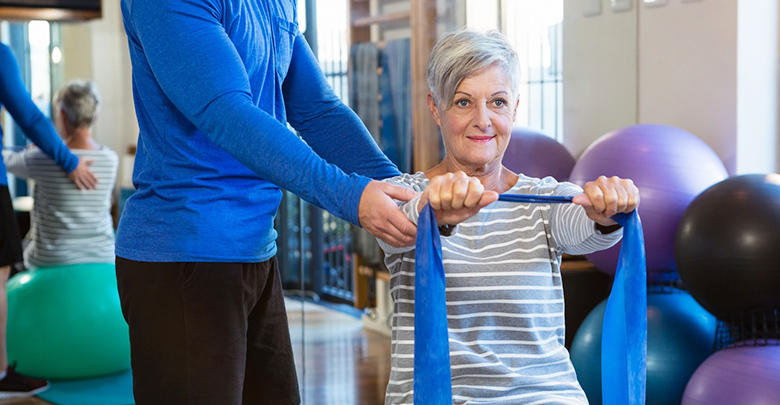Is Muscle Mass the Fountain of Youth?
Moderate muscle strength may lower risk for type 2 diabetes


We spoke with Angelique (Angie) Brellenthin, a postdoctoral researcher in kinesiology at Iowa State University and co-author of a new research study.
The study of more than 4,500 adults found moderate muscle mass reduced the risk for type 2 diabetes by 32 percent. The benefits were independent of cardiorespiratory fitness, and higher levels of muscle strength did not provide additional protection. The findings are published in the journal Mayo Clinic Proceedings.
“The results are encouraging because even small amounts of resistance exercise may be helpful in preventing type 2 diabetes by improving muscle strength.
While more work is needed to determine the proper dose of resistance exercise for different health outcomes and populations, any exercise that increases strength is helpful.
This includes chest and leg presses with:
- Resistance bands
- Weight lifting machines or free weights
Building strength with resistance exercise
The study is one of the first to look at the risk of type 2 diabetes and muscle strength, separate from cardiorespiratory fitness. Participants ranged in age from 20 to 100 years old. All were required to complete initial and follow-up exams.
Moderate strength reduced the risk of type 2 diabetes regardless of lifestyle choices such as smoking and drinking, or health issues such as obesity and high blood pressure,” said Angie Brellenthin
Other research has found resistance training improves glucose levels and reduces waist circumference – an indicator of excess fat associated with type 2 diabetes and other health issues.
Resistance training may help lower your risk for type 2 diabetes even though you do not lose body weight, and we know maintaining muscle mass helps us stay functional and independent throughout life.
Start small, keep it simple
Based on self-reports, Brellenthin says only 20 percent of Americans meet the guidelines (two days a week of muscle-strengthening activities) for resistance exercise. While data for the study are not sufficient to provide suggestions for weight training, she says some is better than none. Getting started does not require a gym membership or expensive equipment. In fact, you can start at home by doing body-weight exercises.
We want to encourage small amounts of resistance training and it doesn’t need to be complicated,” Brellenthin said. “You can get a good resistance workout with squats, planks or lunges. Then, as you build strength, you can consider adding free weights or weight machines.”




